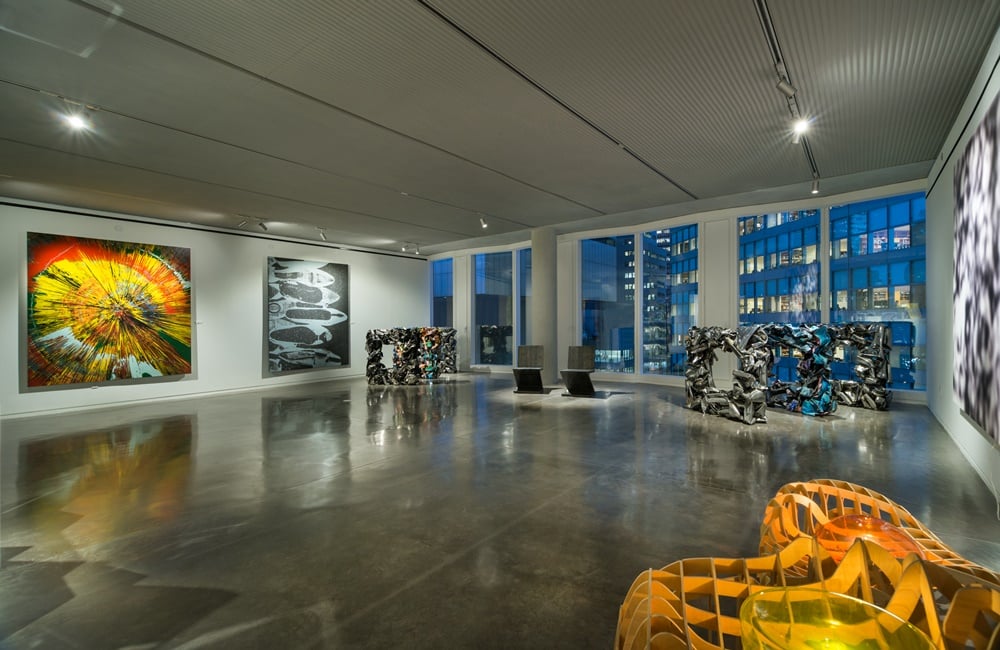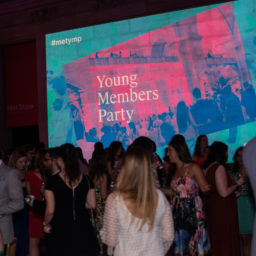Who better than a top New York art collector to design a luxury Manhattan tower that caters to other art lovers and collectors?
Real-estate developer and mega-collector Aby Rosen is behind the new 63-story building in midtown, known as 100 East 53rd, which is directly adjacent to the Seagram building, which Rosen’s RFR Realty company owns and operates.
Rosen, who is co-founder and principal of RFR, worked with his favorite architect, Norman Foster of Foster + Partners, to design the building, which has more than 94 units. In-house perks include a swimming pool, spa, private lounge, and a restaurant helmed by chef Joël Robuchon. Apartments start at $2.3 million and go up to $65 million for a duplex penthouse. (According to reports, George and Amal Clooney and Cindy Crawford and her husband Randy Gerber have already snapped up units in the building.)
Oh, and did we mention the art? Not only has Rosen studded model apartments with works from his own collection to give buyers a sense of how their new homes might look, he and his sales staff are offering to advise or connect clients with art advisors. Rosen has also commissioned site-specific works and acquired permanent pieces for the lobby.
We caught up with Rosen to talk about the inspiration for the building and its fusion of art, architecture, and design.
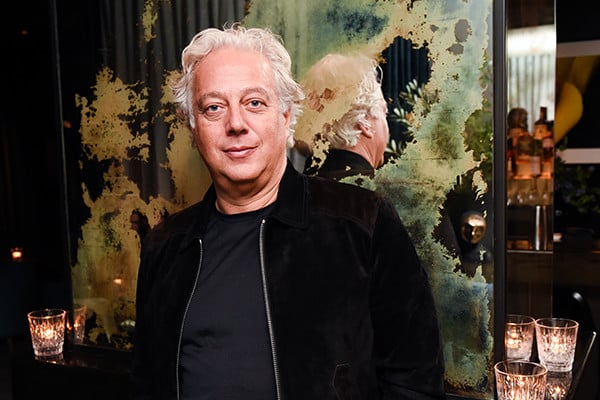
Aby Rosen. Photo: courtesy BFA.
Tell us about the first works of art that visitors encounter—the art in the lobby.
We commissioned a whole installation by Rachel Feinstein here. I love her work and we did a show with her at Lever House. The new one is Panorama of New York, and she painted on mirror with acrylic and resin. It hangs in the vestibule of the building and you can see into it. You see a silhouette of the Empire State Building and the Woolworth Building. It really draws your eye but it’s not like a regular mirror that you look into to make sure that you look good. It’s like a fantasy cityscape and reflects the energy of what New York is all about. It’s a really playful moment. Then there is a painting by young dynamic artist Federico de Francesco that hangs close to the elevator, and a mid-1990s bronze CAIRN II sculpture by Bryan Hunt, which fits with another theme.
Which is?
Well, Norman Foster was very smart in saying to us, “Pick something that is in the neighborhood that is strong and significant and that adds quality to our building.” With the Seagram building in mind, we chose bronze. There is nothing better than bronze. It ages really well, so we pulled that in and incorporated the so-called neighbor into this building with bronze touches throughout.
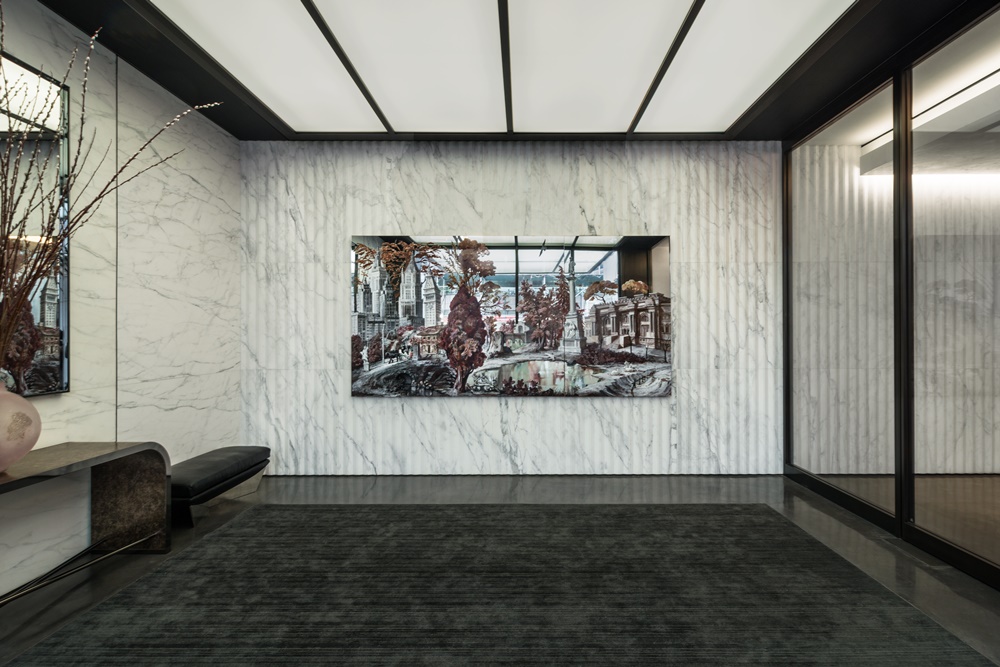
Lobby with Panorama of New York by Rachel Feinstein. Photo by Bjorg Magnea.
Are you the sole decision maker when it comes to selecting the art?
Yes. This is a dictatorship here and a benevolent dictator makes decisions. We do take care how we curate the spaces, what books we put there, what kind of accessories. We agonize over every detail. In the end, it’s all in the detail.
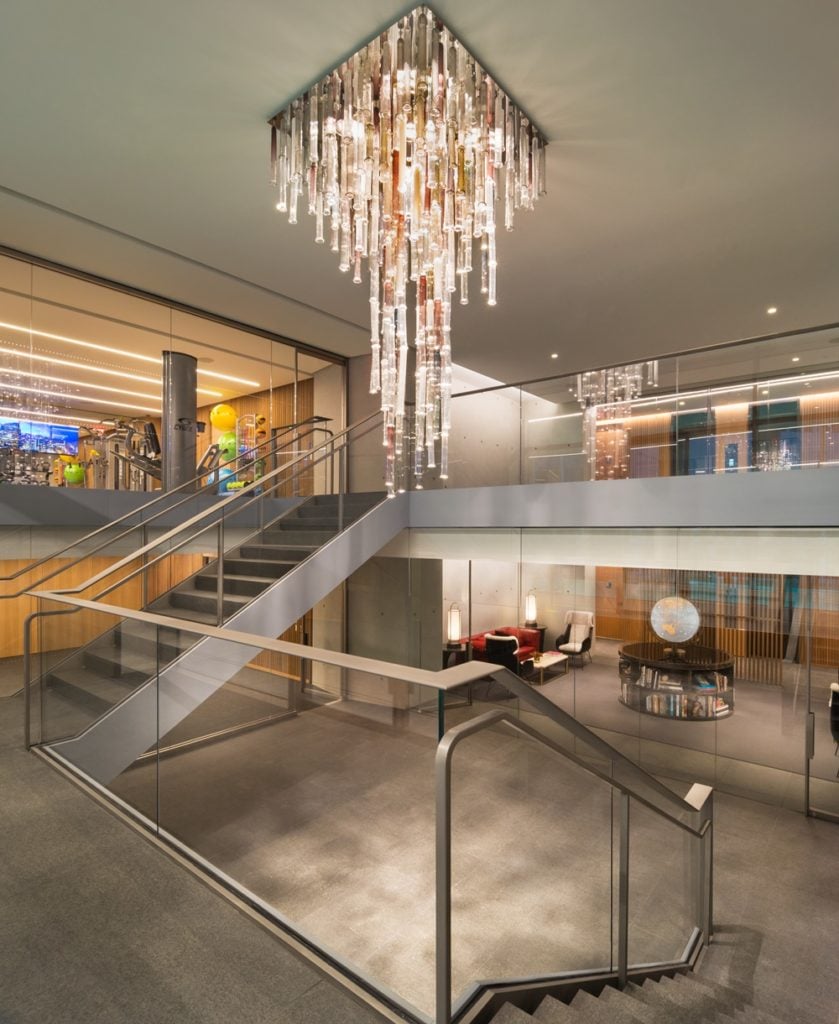
Private residents’ club. Photo by Bjorg Magnea.
Tell us about the apartments themselves.
The fifth- through ninth-floor loft apartments have very much a kind of downtown feel with gray walls and concrete floors. They have kind of a gritty feel. Higher up we have some model apartments with beautiful furniture, some art, some photography, and drawings that give somebody a more finished version of how the home might look.
What about the furniture and interior design?
In addition to showing both big and smaller paintings to help buyers envision living with their collection, another dialogue we have is about how the right furniture is equally important. It’s no accident that design sales in the last two to three years are through the roof at all three major auction houses. A $20,000 lamp is today a $200,000 lamp—it becomes like a piece of art. If you look at any Giacometti lamp or table they are easily $300,000 to $400,000. So it’s not always about what goes on the wall. It’s also about what goes on the floor, and how art, architecture, and furniture all work together.
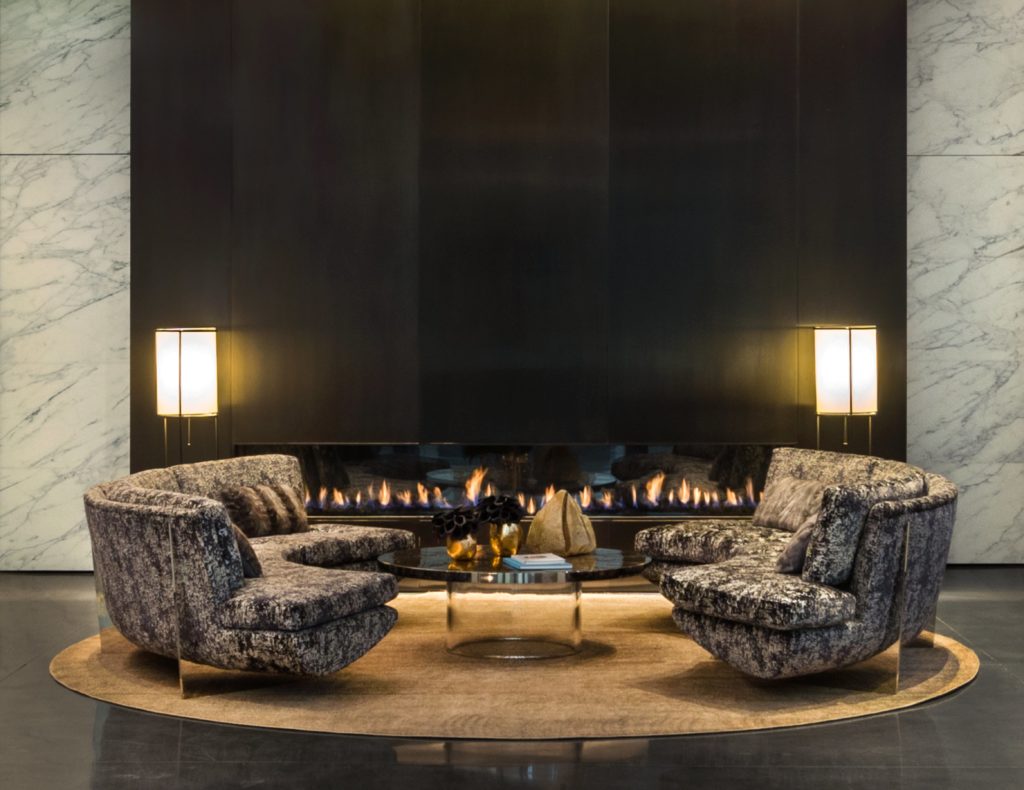
Lobby seating area. Photo by Bjorg Magnea
Who do you envision buying apartments here? Do you have to be a collector?
We’re trying to promote and talk about a different lifestyle than you find on Fifth Avenue and Park Avenue. Maybe for younger people who grew up in those buildings, they don’t necessarily want to go back to this kind of environment but instead one that’s a bit more unstructured and contemporary.
Beyond that, there are many different types of buyers. Some people plan three years in advance, while others need instant gratification. Then there are the art and architecture junkies who are drawn to the fact that the building is designed by Norman Foster or those that wait to buy when it’s 98 percent done because they want to wait and see what is actually happening and then move in three months later.
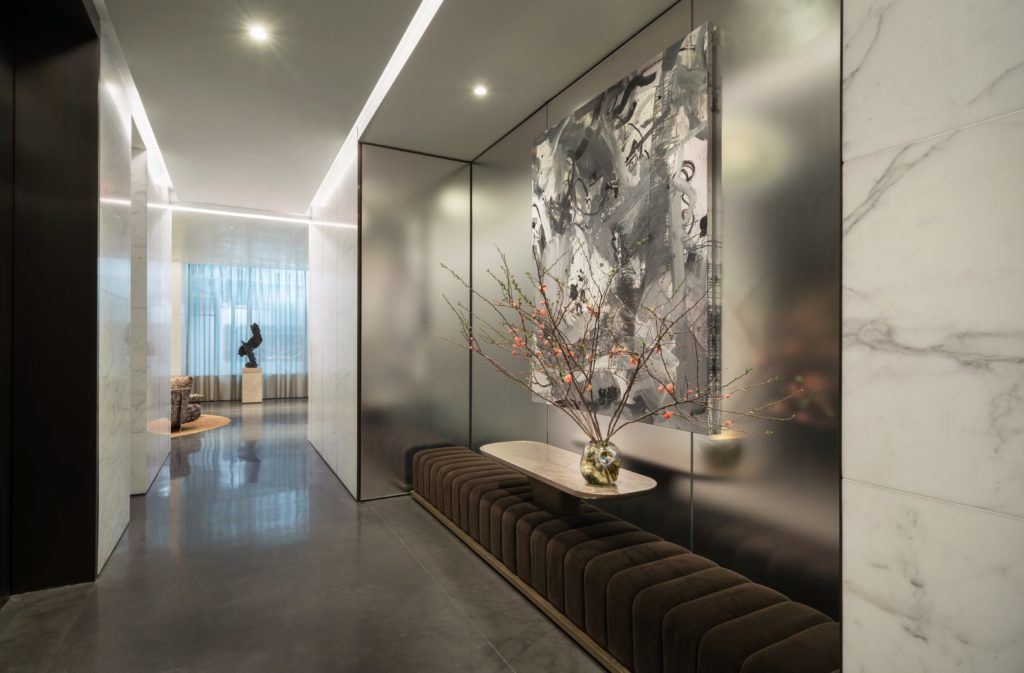
Federico de Francesco, Homage to Romanian Blouse III-1 (2017). Photo by Bjorg Magnea.
Given that ultra-competitive landscape, what else sets 100 East 53rd apart?
The more we’re pushing this whole art, architecture, and design concept, the more we realize we’re on the right track. We have the sourcing and we have the right people working for us so it’s like selling a package, an idea. The more we get into a dialogue with buyers the more of a chance we have to actually close out a transaction. It’s not only square footage that makes the difference, it’s the energy and the time that the developer spends with the builder that shows we have shared interests and are on the same wavelength with potential buyers. People understand our story and we have a compelling story to tell.
Follow Artnet News on Facebook:
Want to stay ahead of the art world? Subscribe to our newsletter to get the breaking news, eye-opening interviews, and incisive critical takes that drive the conversation forward.
